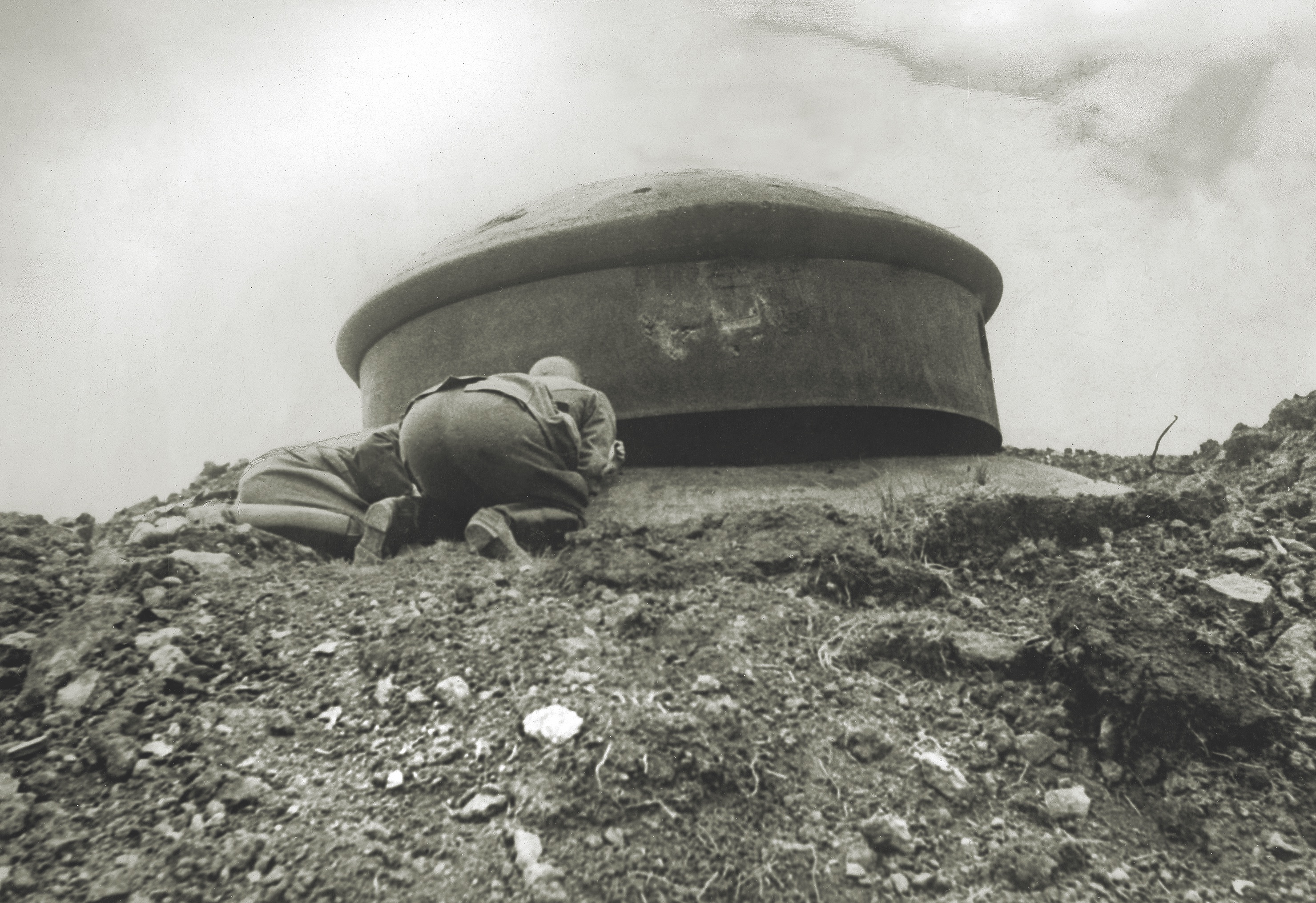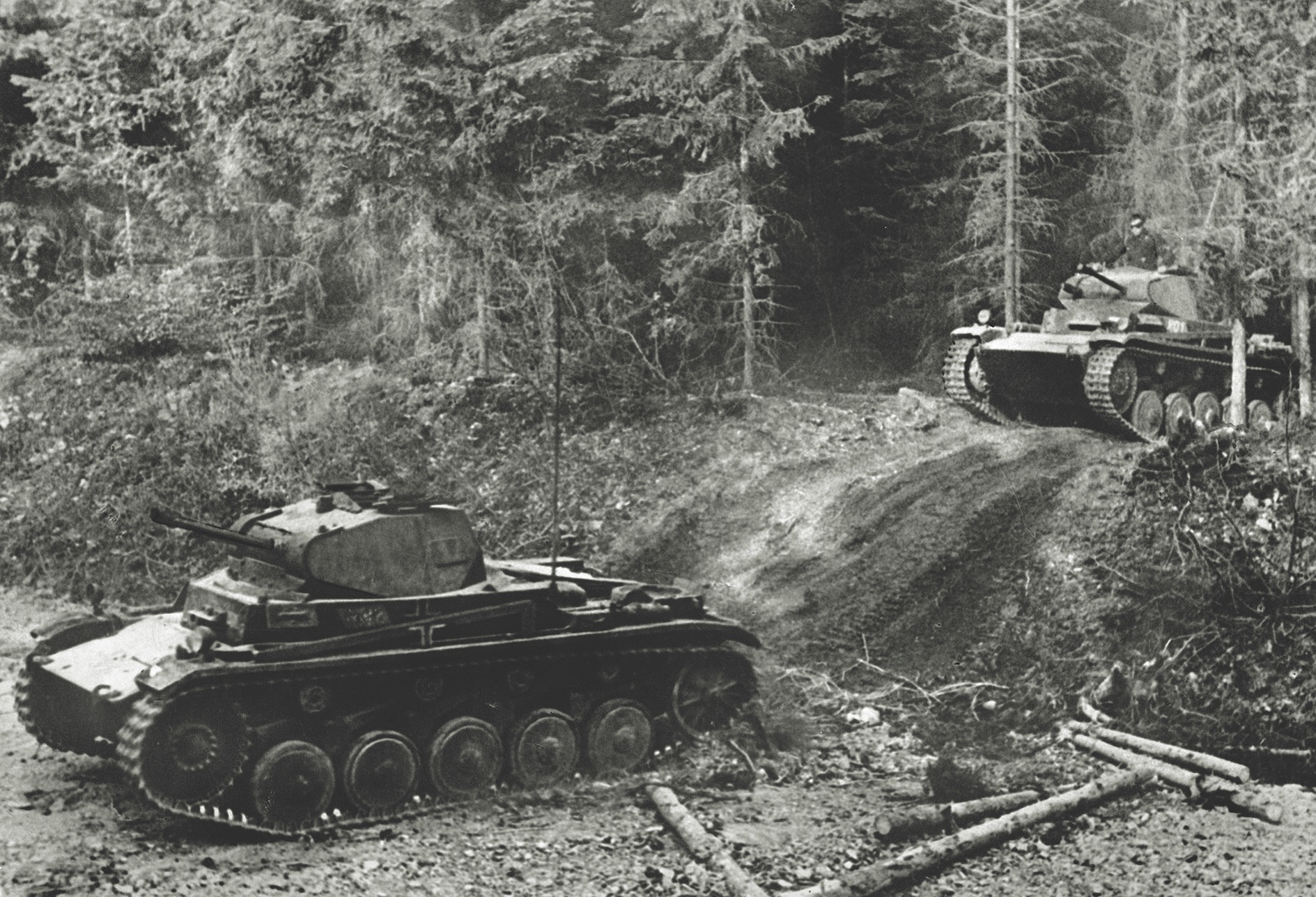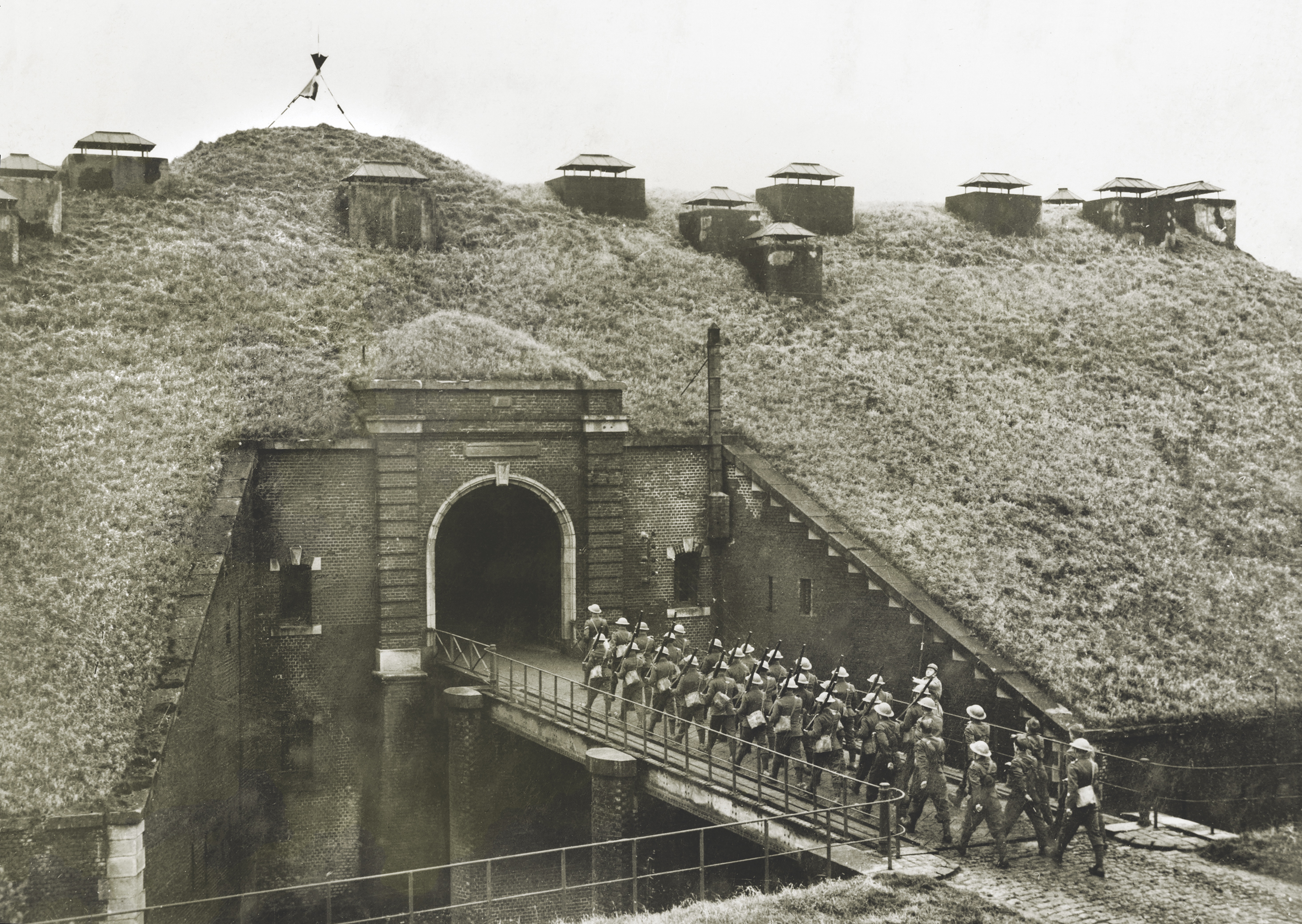Over the course of nearly a century the military moniker “Maginot Line” has become something of a punch line—a euphemism, according to Merriam-Webster, for any “defensive barrier or strategy that inspires a false sense of security.” A belief prevails among historians that the line’s failure to stop or even impede Germany’s stunning 1940 blitzkrieg assault enabled the rapid Nazi take-over of France. The truth is more nuanced, involving sophisticated planning and technology, but ending, ultimately, with abandonment at the highest levels of the French war machine.
The concept of a fortified defensive barrier between France and its archenemy, Germany, first surfaced in the early 1920s. Less than a decade before, in the early days of World War I, France had suffered an invasion and humiliating partial occupation by Germany. As a result, a number of the conflict’s most devastating battles raged on French soil. The loss of life was nothing short of cataclysmic, wiping out nearly an entire generation of young men. The postwar government was determined not to let such an invasion happen again. While some French political and military leaders met the proposal with skepticism, supporters of a defensive line carried the day.
Engineers undertook a number of feasibility studies, and in 1927 the French government approved the basic concept. The Commission for the Organization of Fortified Regions (CORF) would design the barrier and assume responsibility for its construction and maintenance. The line was not the brainchild of its namesake, André Maginot; that bit of folklore derived from a 1935 newspaper article. Maginot was, however, the second of two persuasive ministers of war—the first being Paul Painlevé—who lobbied tirelessly for the funding to construct the barrier.
After considerable debate, organizers signed off on a plan for an interdependent chain of fortified installations along hundreds of miles of the French-German border, blocking the most likely routes of a future invasion. The project was expected to take nearly a decade and cost untold billions of francs.
The first step was to determine where to build the initial defenses. The Alps buttressed the nation’s shared borders with Italy and Switzerland, while the Rhine River and low-lying Vosges Mountains to the east also presented natural barriers. The French Ministry of War, therefore, focused on the Rhineland as the most immediate area of concern. Bordering Alsace and Lorraine and encompassing the heavily industrial Ruhr Valley, that region had been demilitarized as a condition of the 1919 Treaty of Versailles and for a time had served as an effective buffer zone between France and Germany. However, the 1929 Hague Conference on German Reparations stipulated that Allied occupation forces must vacate the Rhineland no later than June of the following year, once again leaving France vulnerable. It was only a matter of time before Germany moved to reoccupy and remilitarize the region.
Historically speaking, the path of Germanic invasions had occurred elsewhere. “The trouble with the Maginot Line was that it was in the wrong place,” war correspondent William Shirer wrote. “The classical invasion route to France which the Germans had taken since the earliest tribal days—for nearly two millennia—lay through Belgium. This was the shortest way and the easiest, for it lay through level land with few rivers of any consequence to cross.”
But the French strategists knew that. As planned, the barrier would end just short of the French-Belgian border. According to various historians, the French hoped the line would divert a German invasion through Belgium, thus enabling them and their allies to fight on non-Gallic soil. To paraphrase 19th century Prussian military theorist Carl von Clausewitz, if you entrench yourself behind strong fortifications, you compel the enemy to seek a solution elsewhere. As far as the French were concerned, “elsewhere” would be the fields and streets of their traditional ally, Belgium.

In 1929 local contractors under CORF supervision began construction on the Maginot Line. Contrary to popular imagination, the barrier was not an unbroken wall but a staggered length of reinforced strongpoints with interlocking fields of fire—a system of defense in depth. It comprised a series of subterranean fortifications, with various support structures extending back several miles. The whole was designed to blend with the terrain.
Directly along the border stood reinforced concrete barracks—maisons fortes—whose function was to delay an initial attack and sound the alarm to the primary defenses. Far to the rear stood bunkers equipped with automatic weapons and anti-tank guns. Fronting them were barbed wire coils and rows of tank barriers made of upended steel rails. Behind and between the bunkers was a row of reinforced two-story concrete casemates. Often built into a hillside to conceal their profile, the casemates featured firing embrasures and retractable turrets armed with both small- and large-caliber weapons.
The casemates’ main function was to supplement what one chronicler called the “real ‘teeth’ of the Maginot Line,” the ouvrages (“works”). These varied in size and complexity from a single massive concrete block sunk deep into the ground and capped with a retractable armored turret to a combination of turreted surface blocks and subterranean support facilities. Also fronting the ouvrages and casemates were barbed wire and steel obstacles, as well as small cloches—domelike thick steel structures used as both observation and close-in defense posts.
The ouvrages came in two sizes: petit (“small”) and gros (“large”). The turrets of the gros ouvrages were armed with machine guns, anti-tank guns and/or artillery pieces; those of the petits ouvrages were armed only with infantry weapons. While the gros ouvrages each held garrisons ranging from 200 to 1,000 men, depending on size, the complements within the petits ouvrages were considerably smaller.
Fanning out deep beneath each ouvrage ran a series of tunnels and galleries containing the power plant, storerooms, barracks, washrooms, kitchen, ammunition depot and infirmary. The longest gallery often included an electric-powered train—dubbed the Metro, after the Paris subway—that carried ammunition to the gun emplacements. Surface rail lines enabled the replenishment of each ouvrage’s supplies and ammunition. In addition to the use of terrain for concealment, work crews applied camouflage to the fortifications. With the exception of the nonretractable cloches, the entire line displayed a low profile, in some places virtually invisible.
At a time when many French villages lacked plumbing and/or electricity, the ouvrages featured indoor plumbing and were powered by a sophisticated electrical system. An elaborate telephone network connected every structure in the Maginot Line and was linked to the French public phone system by buried cables.
Modern conveniences aside, life was far from pleasant for soldiers assigned to the ouvrages. Buried deep underground, the structures were generally damp and cold, and while air filtration systems kept out poison gas, the drainage for the latrines had a tendency to back up, often creating a markedly malodorous atmosphere.
The war ministry assigned 35 divisions of mobile “interval” troops, as well as units of towed artillery, to fill the gaps between structures. Troops manning the fortifications were confident in their ability to stop any attack—indeed, their motto and uniform badges read On Ne Passe Pas—idiomatically translated as They Shall Not Pass.
The line, which eventually added an extension dubbed the “Little Maginot Line” along the mountainous French-Italian border, was mobilized in 1936 and considered fully operational two years later. On completion it comprised more than 50 million cubic feet of concrete, 150,000 tons of steel and 280 miles of internal roads and railways. It was, according to one chronicler, “the greatest defensive barrier constructed since the Great Wall of China.”

Despite the effort put into building, equipping and manning the Maginot Line, underlying flaws lay at the very core of the ambitious project, ones having nothing to do with its impressive state-of-the-art engineering. A general misconception at the time—one that survives today—was that the line was built to stop a German invasion in its tracks. It was not. The goal was to create a stout first line of defense against an enemy attack, to delay the Germans long enough (perhaps a week or two) for France to mobilize its army for a counterattack.
Unfortunately, the French government’s confidence in its army’s ability to effectively respond to a German offensive was misplaced. While the Maginot Line was fully capable of stalling the enemy, the army was largely incapable of mounting a sustained counterattack. The horrendous loss of manpower in World War I was reflected all too clearly in the emaciated state of the interwar French army. Enlistment was at an all-time low, and the length of compulsory military service had been reduced to just one year.
Gradually, instead of being regarded as an adjunct to a French field army, the Maginot Line was increasingly seen as a substitute for the army, capable of holding off a German invasion indefinitely. Suffering from what has come to be referred to as the “Maginot mentality,” the French High Command refused to plan for an offensive war.
Most important, however, the French army was commanded by old men, who looked backward for their vision of the future. By focusing exclusively on a static, land-based deterrent to invasion, they were wholly ignoring transformational developments in the areas of airborne and combined arms warfare. Admittedly, at the time the Maginot Line was first conceived, aerial combat and dedicated armored warfare remained in relative infancy. However, by the 1930s the concept of controlling the skies had clearly taken hold. Around the time the line was completed, Germany was demonstrating for the world the effectiveness of destruction from above in Spain.
Meanwhile, powerful and highly mobile armored units—again embraced first by Germany—were rapidly establishing themselves as the vanguard of the infantry, as tanks blazed trails for infantry to follow. Any obstacles not surmountable on the ground could simply be flown over.
Unable or unwilling to adapt to the new technology, the French Ministry of War instead turned to propaganda, hyping the Maginot Line far beyond the reality in an attempt to convince its own citizens and the world, in particular the Germans, of its invulnerability. The propagandists disseminated exaggerated artwork and overblown, misleading descriptions in France, Britain, the United States and elsewhere, depicting a fantastical network of impregnable fortifications through which the enemy simply could not pass. While the campaign lulled the French people into comfortable complacency, it did little to discourage the Germans.
Belatedly the war ministry realized that its failure to extend the line along the Belgian border had been a grave mistake. French planners scrambled frantically to close the gap between the existing line and the English Channel, but funding was low, time was short and any new construction failed to measure up to the original in every way. The French-Belgian border was heavily industrialized, with little room for new construction. Further, the terrain was flat, with no natural barriers. Finally, the land approaching the coastline had a high water table, rendering the building of underground structures and tunnels impossible. The generals deployed troops along the border to compensate for such deficiencies. Still, a crucial gap remained in the line, through the Ardennes Forest. The French generals considered the woodland impervious to penetration by an invading army and had taken little notice of it. That proved a fatal oversight.
In March 1936 Germany, in violation of Versailles, remilitarized the Rhineland. France’s allies did nothing in response, and the French refused to act alone, choosing instead to hide behind their purportedly invulnerable Maginot Line. Meanwhile, the Belgians withdrew from their alliance with France and declared themselves neutral. In September 1939 Germany invaded Poland, finally spurring France and England to declare war. The soldiers of the Maginot Line went on full alert.
On May 10, 1940, Adolf Hitler launched a three-pronged campaign against the Low Countries. In the north German units powered through Belgium and the Netherlands on into France. Farther south infantry and artillery pinned down the interval troops of the Maginot Line, while the German central group stormed through the Ardennes, swiftly navigating terrain the French High Command had deemed impenetrable. Ironically, the very strength of the Maginot Line, real or perceived, had channeled the German attack through France’s weakest point of defense.
On May 17 and 18, in their drive toward the Meuse River, advance elements of the German 71st Infantry Division attacked La Ferté, the weak westernmost petit ouvrage of the isolated and incomplete Maginot Line extension. It comprised just two blocks linked by a tunnel, its turrets armed with twin machine guns, 25 mm anti-tank guns and a single 47 mm antitank gun. La Ferté’s garrison numbered 104 enlisted men and three officers.
The Germans opened up on the fort with mortars and 88 mm antitank guns, which proved ineffectual. Ultimately, however, combat engineers blew an outlying cloche and one of the retractable turrets sky-high, then dropped smoke grenades into the resulting holes. Thick smoke soon choked the tunnel and both blocks, suffocating all 107 men of La Ferté’s garrison. Though the petit ouvrage was a pale imitation of the central Maginot Line fortresses, the German propaganda machine made much of its capture.
Following the destruction of La Ferté, as the German army drove Allied forces inexorably toward the English Channel, the enemy took a handful of minor forts, primarily by compromising their ventilation systems. The Wehrmacht juggernaut then turned its attention south toward Paris. Meanwhile, the men concealed within the Maginot Line’s interconnected subterranean fortresses, largely unaware of developments elsewhere, could only sit and wait. By then the French High Command had severely compromised the line’s surface defenses by redeploying entire divisions of interval troops to bolster the field army.
By early June both the French army and government were in disarray, while the Maginot Line stood defiant, if alone and increasingly irrelevant. On the 10th—the same day the French government fled Paris—Italian dictator Benito Mussolini decided to join the fray, attempting repeatedly to breach the line in the south along the Alpine front. He failed utterly.
On June 12 the panicked French High Command sent word to garrison commanders along the Maginot Line to prepare to demolish their works and withdraw by midnight on the 14th. The order to abandon the line was, in the words of one historian, “the final death blow to French…morale.”
Early on June 14, before the French garrisons could fully comply with the order, the Germans rolled into Paris. At the same time a battle was raging along one stretch of the Maginot Line. Unaware of the French order to abandon the fortifications, the Germans had chosen that day to launch Operation Tiger, sending three entire corps against a narrow, weakly defended stretch of the line at the Saar Gap. For hours, supported by Junkers Ju 87 dive bombers, they pummeled the defenders with sustained fire from more than 1,000 guns of every conceivable type, including massive 420 mm railway guns. It was, writes one chronicler, “the biggest artillery bombardment of the entire Western campaign.”
In a remarkable show of resistance, the remaining French interval artillery and line troops responded with accurate, deadly fire, killing 1,000 Germans and wounding some 4,000 more. Ultimately, however, the enemy managed to break through, effectively splitting the line in two. The German penetrated another section the next day, but only after its defenders had withdrawn to stronger positions in the Vosges.
Notwithstanding the few breakthroughs, the Maginot Line remained largely intact and combat-ready. Though the commander in chief of the French armies ordered a general surrender, and an armistice went into effect on June 25, many troops along the line refused to admit defeat. Isolated and surrounded, they grimly fought on into early July and were the last French troops to lay down their arms. Even as the rest of the army suffered fatal setbacks, they had impeded the invasion, preventing the Germans from taking a single major fortress by force and stopping the Italians cold.
In January 1945, a week into Operation Nordwind, the Germans’ last major offensive on the Western Front, a section of the Maginot Line defending Strasbourg again demonstrated its effectiveness, as outnumbered and outgunned elements of the U.S. Seventh Army within the fortifications repelled the German assault. “A part of the line was used for the purpose it had been designed for and showed what a superb fortification it was,” World War II historian Stephen Ambrose wrote.
In the final analysis, the Maginot Line was neither a glowing success nor a fiasco. Although the heavily reinforced structures proved surprisingly impervious to both aerial bombardment and siege artillery fire, they had not been designed to sustain such attacks indefinitely. Yet, the forts built to impede the German invasion had fulfilled their mandate, delaying the enemy’s progress and inflicting a significant toll in the bargain.
Ultimately, owing to the French government’s shortsightedness, timidity, poor planning and archaic thinking, the Maginot Line was doomed from the outset, its potential squandered. “Had the fortifications been used properly by the High Command,” military historian Anthony Kemp notes, “the course of history could well have been altered.” Indeed, given proper support and utilized as a base for vigorous counterattacks as originally conceived, the Maginot Line—heralded by one historian as “the last defiant bastion of France during the Nazi conquest”—might well have proved decisive.
Ron Soodalter has written for Smithsonian, Civil War Times, and Wild West. For further reading he recommends To the Maginot Line, by Judith M. Hughes; and The Maginot Line: Myth and Reality, by Anthony Kemp.

